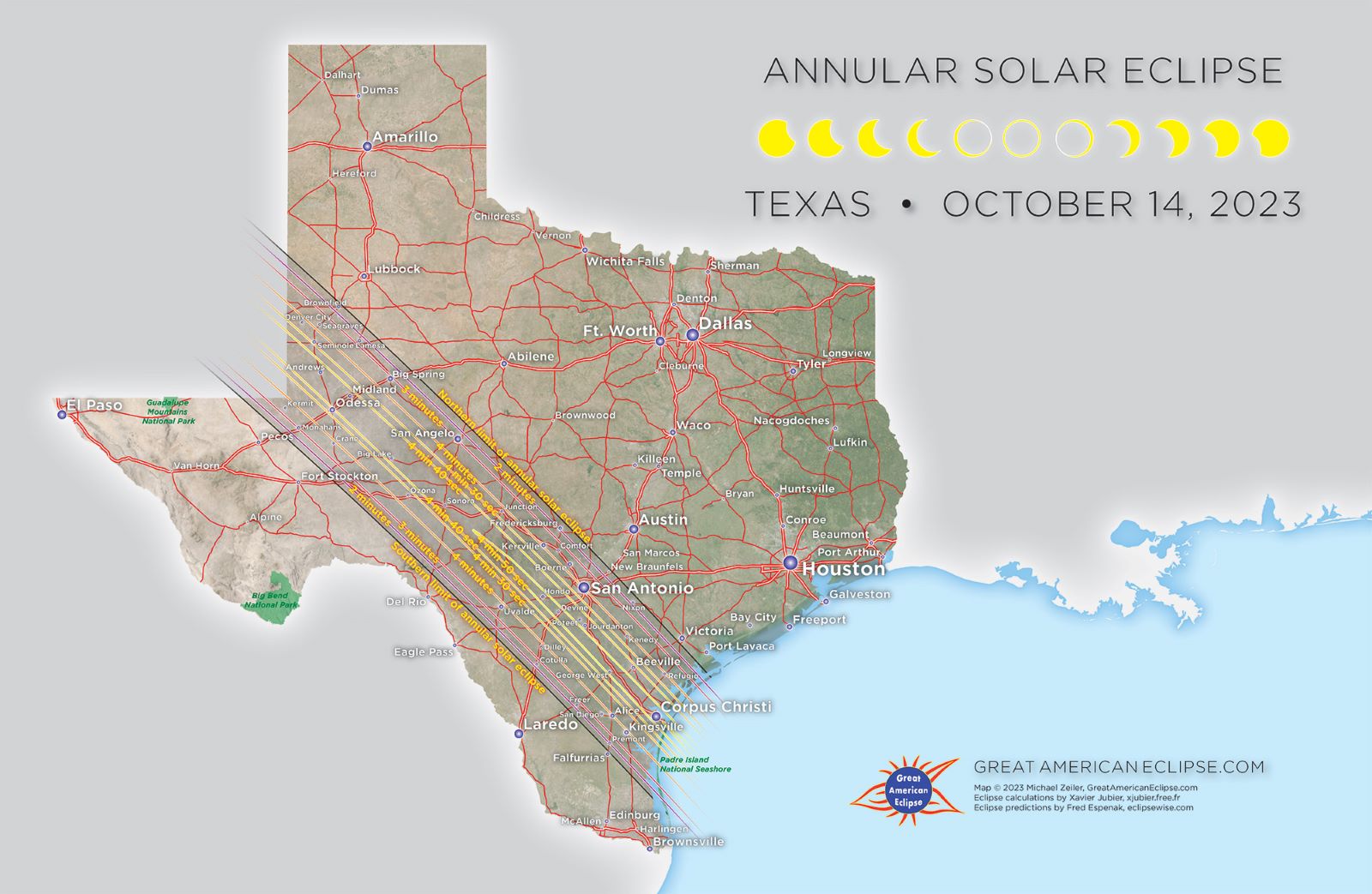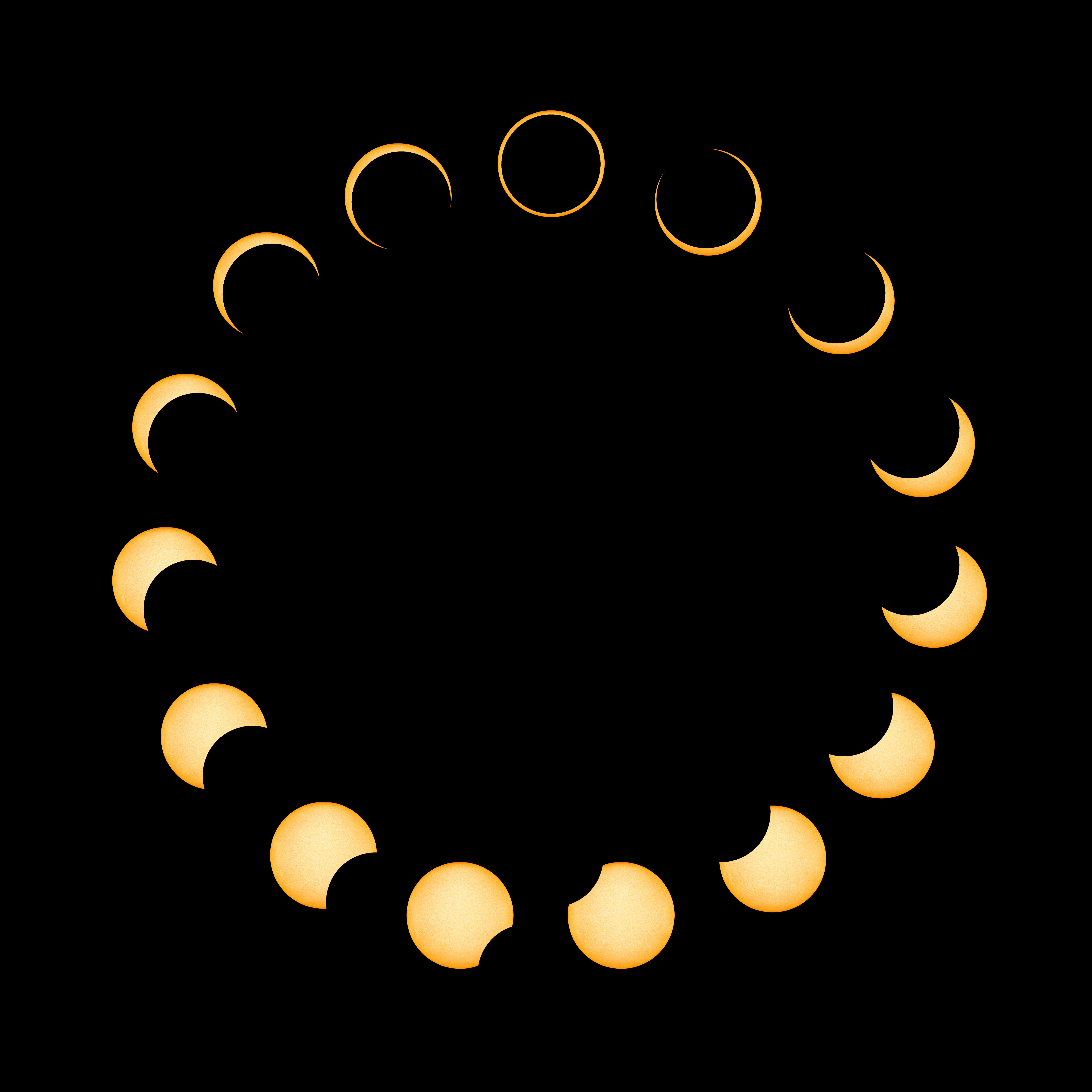Rare “Ring of Fire” Eclipse Will Be Visible in Texas on Saturday, Oct. 14
The Annular Solar Eclipse will be visible in North America for the first time since 2012

(photo credit: Michael Zeiler, GreatAmericanEclipse.com)
WACO, Texas (Oct. 2, 2023) – The noonday sky will put on a spectacular show Saturday, Oct. 14, as the annular solar eclipse will be visible in North America for the first time since 2012. Unlike a total solar eclipse, an annular eclipse means that the outer corona of the sun will be visible, producing a beautiful “Ring of Fire.”
The western part of the Texas hill country will be the best place to view the eclipse in Texas. Odessa, San Antonio, Corpus Christi and Padre Island will have 100% visibility. If you can’t get to one of those places, not to worry. Waco will have a slightly partial view with 84.55% of the eclipse visible.
Baylor University astrophysicist Barbara Castanheira Endl, Ph.D., assistant professor of physics, said the conditions must be perfect for this natural phenomenon to occur. The sun and the moon must be exactly in line with the Earth. As they cross paths, the moon will appear slightly smaller than the sun, producing the “Ring of Fire.”
“Following Kepler’s laws of planetary motion, during an annular eclipse, the ellipticity of the orbit will cause the angular size of the moon to be just a little bit smaller than the angular size of the sun,” Castanheira-Endl said. “Even a small 5% difference in the angles of the sun and the moon, the eclipse would not occur.”
Where and When
According to NASA, the Oct. 14 annular eclipse will have four phases lasting over three hours. The “Ring of Fire” will only be visible during the second phase for six minutes.
- First Contact: At 10:23 a.m. CDT, the moon will begin moving into place. The sun will begin to look like a crescent or “C” shape.
- Second Contact: At 11:53 a.m. CDT, the moon will pass completely in front of the sun reaching full annularity. Only the outer edge of the sun will be visible, creating the dazzling “Ring of Fire” effect. The sky will grow dimmer but not completely dark and the temperature will feel cooler. Some animals act like it is dusk.
- Third Contact: At 11:59 a.m. CDT, the moon will slowly move away from the sun.
- Fourth: At 1:31 p.m. CDT, the moon will have moved past the sun and the eclipse will be over.
Essential Eye Safety During an Eclipse
Because the sun is not completely blocked during an annular eclipse, eye protection is essential. Never look directly at the sun without special-purpose protective eyewear designed for viewing an eclipse. Eclipse glasses or viewers are thousands of times darker than regular glasses and are necessary to view an eclipse safely. To make sure you have real safe solar glasses and not a counterfeit, the American Astronomical Society has complied list of safe solar viewers that comply with the ISO 12312-2 international standards.
If you don’t have eclipse glasses, the AAS has tips on how to view the eclipse with pinhole projection. Anything with holes, like a colander or slotted spoon, can be used for pinhole projection.
ABOUT BAYLOR UNIVERSITY
Baylor University is a private Christian University and a nationally ranked Research 1 institution. The University provides a vibrant campus community for more than 20,000 students by blending interdisciplinary research with an international reputation for educational excellence and a faculty commitment to teaching and scholarship. Chartered in 1845 by the Republic of Texas through the efforts of Baptist pioneers, Baylor is the oldest continually operating University in Texas. Located in Waco, Baylor welcomes students from all 50 states and more than 90 countries to study a broad range of degrees among its 12 nationally recognized academic divisions.
ABOUT THE COLLEGE OF ARTS & SCIENCES AT BAYLOR UNIVERSITY
The College of Arts & Sciences is Baylor University’s largest academic division, consisting of 25 academic departments in the sciences, humanities, fine arts and social sciences, as well as 11 academic centers and institutes. The more than 5,000 courses taught in the College span topics from art and theatre to religion, philosophy, sociology and the natural sciences. The College’s undergraduate Unified Core Curriculum, which routinely receives top grades in national assessments, emphasizes a liberal education characterized by critical thinking, communication, civic engagement and Christian commitment. Arts & Sciences faculty conduct research around the world, and research on the undergraduate and graduate level is prevalent throughout all disciplines. Visit the College of Arts & Sciences website.


